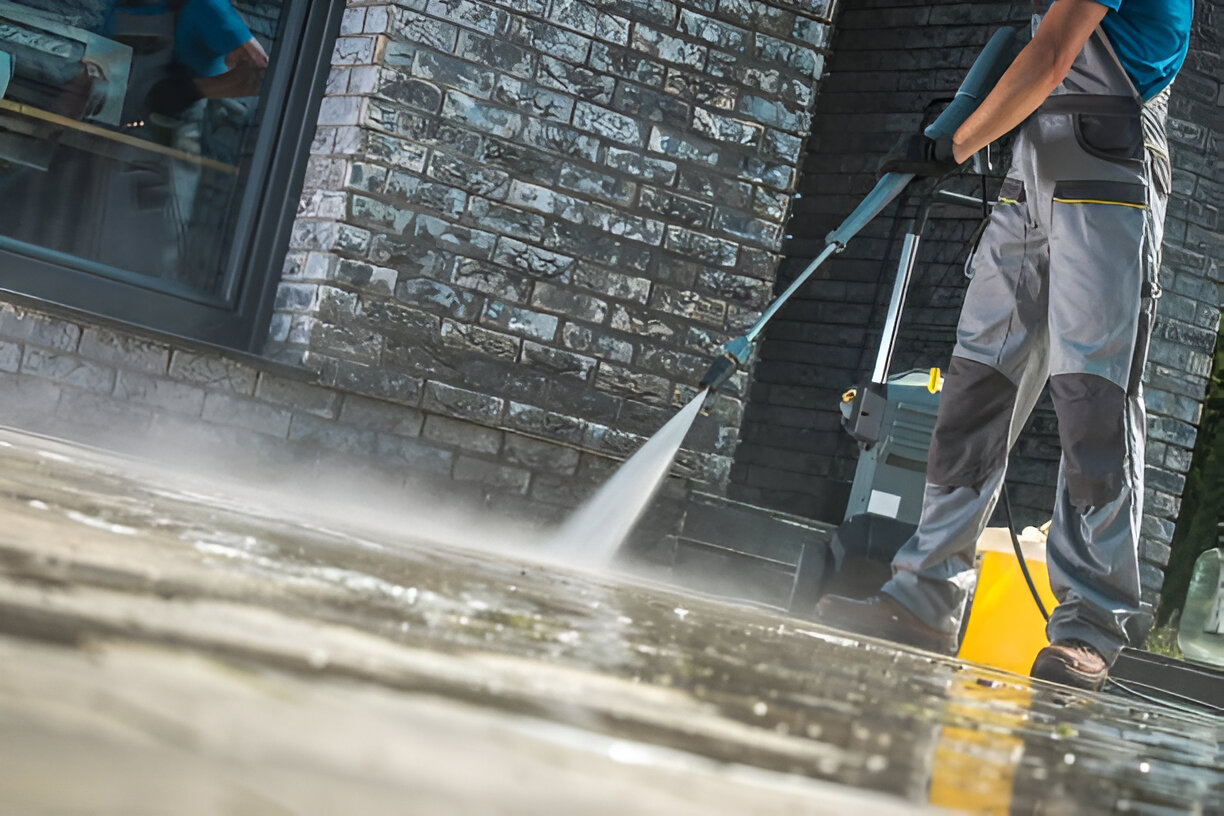
A clean driveway not only enhances the curb appeal of your home but also extends the life of the driveway surface. Regular maintenance prevents the buildup of dirt, oil stains, and algae, ensuring a safe and aesthetically pleasing entrance to your home. Here are ten tips to help you achieve an effectively clean driveway.
1. Gather the Right Tools and Materials
Before starting, ensure you have the necessary tools and materials:
- Pressure washer or garden hose with a high-pressure nozzle
- Broom and stiff-bristled brush
- Cleaning agents such as degreaser, detergent, or baking soda
- Protective gear (gloves, goggles)
- Bucket and water
- Sealant (optional for long-term protection)
Having these items ready will make the cleaning process smoother and more efficient.
2. Sweep Away Debris
Start by sweeping the driveway to remove loose debris like leaves, dirt, and small stones. This step is crucial as it prevents these particles from scratching the surface when you start washing. Use a stiff-bristled broom for a thorough clean.
3. Pre-Treat Stains
Driveways often accumulate various stains from oil, grease, rust, and tire marks. Pre-treat these stains before the main cleaning. Here are some methods:
- Oil and Grease Stains: Apply a degreaser or a mixture of baking soda and water. Let it sit for 15-20 minutes before scrubbing with a stiff brush.
- Rust Stains: Use a rust remover or a paste of lemon juice and baking soda. Let it sit for a few minutes, then scrub and rinse.
- Tire Marks: Apply a concrete cleaner or a mix of detergent and water, and scrub vigorously.
4. Use a Pressure Washer for Deep Cleaning
A pressure washer is highly effective for driveway cleaning. It can remove stubborn stains, algae, and grime that a regular garden hose can’t. Here’s how to use it:
- Setting Up: Connect the pressure washer to a water source and plug it into a power outlet.
- Safety First: Wear protective gear like goggles and gloves to prevent injury from flying debris.
- Technique: Hold the nozzle at a 45-degree angle and maintain a consistent distance (usually 6-12 inches) from the surface. Start from the highest point of the driveway and work your way down, ensuring even coverage.
5. Use Eco-Friendly Cleaners
Opt for environmentally friendly cleaners to minimize the impact on surrounding vegetation and the water supply. Biodegradable detergents, vinegar, and baking soda are effective alternatives to harsh chemicals. They not only clean effectively but also reduce harm to the environment.
6. Address Algae and Mold Growth
Algae and mold can make driveways slippery and unsightly. To remove them:
- Bleach Solution: Mix one part bleach with four parts water. Apply to the affected area and let it sit for 10-15 minutes before scrubbing and rinsing.
- Vinegar Solution: Alternatively, use white vinegar mixed with water in equal parts. This method is safer for plants and pets.
7. Rinse Thoroughly
After scrubbing and treating stains, rinse the driveway thoroughly with a garden hose or pressure washer. This step ensures all cleaning agents, dirt, and debris are washed away. For best results, start from the top and work your way down, allowing gravity to aid in the cleaning process.
8. Fill Cracks and Seal
Inspect the driveway for cracks and repair them to prevent further damage. Use a suitable crack filler for your driveway material (asphalt or concrete). After filling the cracks, consider sealing the driveway:
- Concrete Sealers: These penetrate the surface and protect against water, stains, and UV damage.
- Asphalt Sealers: They provide a protective layer against elements and enhance the appearance of the driveway.
Applying a sealant not only prolongs the life of the driveway but also makes future cleaning easier.
9. Regular Maintenance
Regular maintenance prevents the buildup of dirt and stains, making deep cleaning less frequent. Here are some tips:
- Sweep Weekly: Regular sweeping removes loose debris and prevents accumulation.
- Address Stains Promptly: Treat spills and stains as soon as they occur to prevent them from setting.
- Periodic Washing: Use a garden hose or pressure washer every few months to keep the driveway clean.
10. Preventative Measures
Taking preventative measures can significantly reduce the amount of cleaning required:
- Use Driveway Mats: Place mats under vehicles to catch oil drips and prevent stains.
- Landscaping: Ensure proper drainage around the driveway to prevent water pooling and algae growth.
- Protective Coatings: Consider applying a protective coating to prevent stains and make cleaning easier.
Conclusion
Maintaining a clean driveway is not only about aesthetics but also about safety and longevity. With the right tools, techniques, and regular maintenance, you can keep your driveway looking pristine and welcoming. Remember, the key to effective driveway cleaning is consistency and using the appropriate methods for your specific driveway material. Start implementing these tips today, and enjoy the benefits of a spotless driveway.